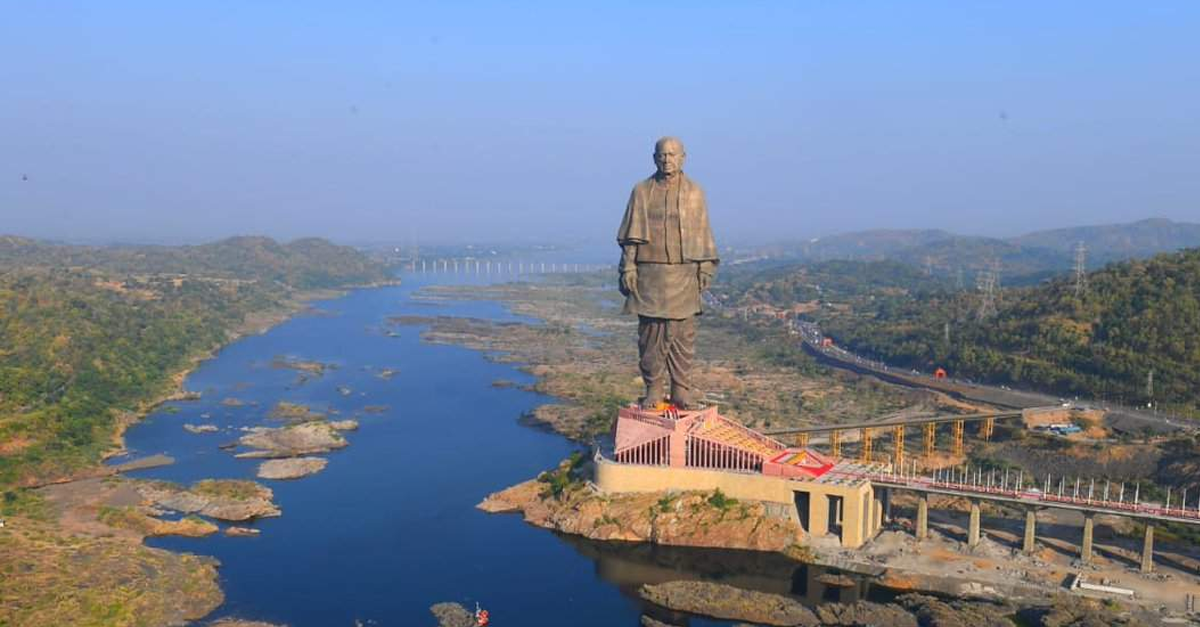The tallest statue in the world – that of Sardar Vallabhbhai Patel – was recently unveiled by Prime Minister Modi on Sadhu Bet island in the Narmada river. With the next general elections in India due in just a few months, a politically charged atmosphere is, naturally, taking over public consciousness in the country. In this context, the statue has attracted considerable debate. Was the project an example of wasteful expenditure? Could the money spent on the project not have been used to address more pressing concerns? These were some of the questions raised by the detractors of the project.
In the Indian context, these questions are natural. Despite the considerable progress the country is making on the economic front, a sizable section of the population is still dealing with very basic issues. The percentages might be improving but the absolute number of people still living in extreme poverty is considerable. The agriculture sector of the country, which provides the livelihood of more than half the population, is making very slow progress in terms of per capita income. The state of healthcare and education, among several other basic needs, is improving but is still very far from ideal for a significant section of the population.
This blog is my attempt to share some thoughts with the reader on the issue of the statue. Despite my belief that it is possible to have a complex opinion on issues, I think providing basic living standards for all Indians should be a concern that is followed with a single minded focus. I have always believed that there is never a good reason to look at life as a zero sum game. The world is probably more accurately understood by considering contrasting ideas simultaneously.
However, I also value the lives of all human beings above everything else. While it is a mater of pride and honor to celebrate our ancestors and historical inspirational figures, they cannot take precedence over the provision of basic rights. I strongly believe that so many decades after independence, any Indian government should first and foremost work hard, and allocate funds accordingly, to ensure that the basic needs of the country’s citizens are addressed. In the case of a developing economy like India, this focus should be constant until a lasting change in the living conditions of all sections of society has been achieved. In the course of their existence such monuments do recover their cost and promote the local economy through tourism and other such means, but, in my opinion, there are far more immediate concerns that India needs to address as a nation.
I have come across some counter arguments to my single-minded concern for the poorest and most vulnerable in India. Some sections of people believe that we are conditioned to view such projects from a particular prism in India. The point such people make is that extreme poverty exists in virtually all economies in the world, even in many of the richest nations in the world. Should India, not be free to aspire and achieve in the same way as any other country, while continuing to make more fundamental changes? After all, the needs of a hungry, homeless or otherwise vulnerable person make the same moral case, no matter which economy they are a citizen of.
While I can see the basis of these arguments, I differ in some core ways. First and foremost, I don’t think Indians should concern themselves with whether or not there is ideal social justice in any other part of the world. I have always had a strong belief in the humanist principles of the Indian civilization and I believe the nation should pursue these priorities regardless of what has been considered acceptable in any other instance. I am even prepared to acknowledge that the India of today is changing and, in particular, that the government funds allocated towards the statue are minimal in terms of the larger economy. However, my concern is actually specifically that despite strong growth of the Indian economy there are still huge numbers of people living in conditions that are deeply troubling to me. I remember reading a world bank assessment of the Indian economy from the end of 2017 which focused on the great strides the nation was making. In particular, there was a reference to the huge numbers of people that had emerged above the poverty line but I remember being saddened by the figure representing the sheer number of people who had still not. This is not a matter of seeing the glass as half empty. Having seen instances of abject poverty first hand, I have an obsessive concern with changing that reality. In my opinion, there is nothing more precious than the life of each individual in our society. While we can draw some inspiration from the changes that have been achieved, I believe our focus should be on what we still need to transform. In this context, despite being in awe of what Sardar Vallabhbhai Patel’s contribution to modern India is, I believe the statue was a wasteful expenditure that should have been allocated towards programs working on ending basic human suffering in India. In fact, I believe the best way to pay our respects to the great man would be to continue to work for the upliftment of all sections of Indian society with the same drive and single-minded focus that he displayed.
I remember the decades of my younger years when it was presumed that it was impossible for India to become a developed nation in much the same way as some of the currently worst performing economies of the world are looked at today. The same world economic forums that made those assessments in the past now forecast the end of what could be seen as systemic poverty in India, by 2030. The country that has recently become electricity surplus and achieved food self-sufficiency in far more than just basic grain production, for only the first time in 70 years. It is not that I don’t acknowledge these changes. In a recent pan-African economic forum, the example of India’s economy was cited as a path forward for the continent to address its own issues with poverty and basic human needs. These are all positives but, as an Indian and a dreamer of dreams, my insistence is that our focus should remain firmly on what else needs to be done. Impressive as the figures of India’s recent growth are, the sheer population of the country means that the negatives are still huge.
I can recall the immortal words of another of India’s greatest sons. Swami Vivekananda gave the famous call of “arise, awake and stop not till the goal is reached”. While I am filled with hope because of the changes that are underway, this emotion makes me even more eager to see this transformation taken to its fulfillment. Looking at the larger picture, as India’s circumstances and self-image continue to evolve, such questions will continue to arise from time to time, until they have been addressed completely. In my opinion, the greatest tribute we can pay our founding fathers and national heroes is to strive without respite until all of Indian society has access to basic amenities and social justice. Creating a modern nation that is universally prosperous and provides all its citizens the means to live a dignified life is the greatest tribute and monument that we as modern Indians can create to celebrate those who gave their all in the service of our motherland.

